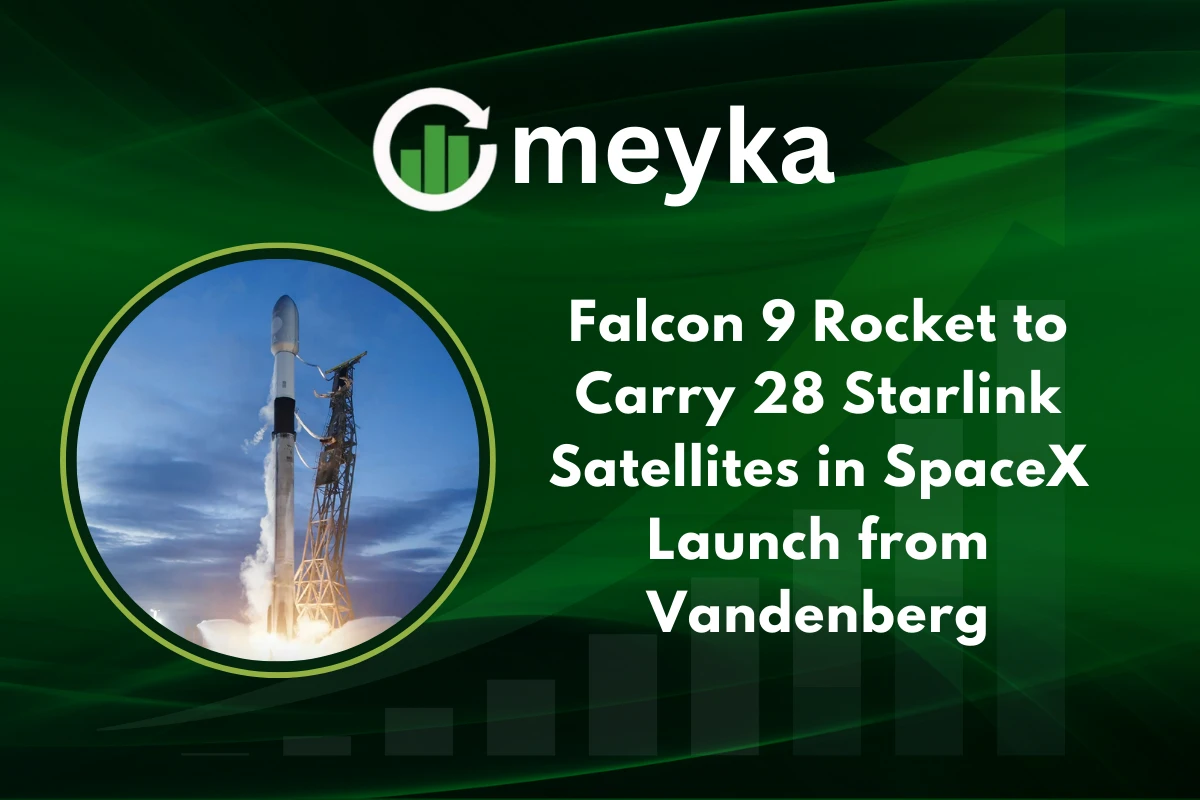Falcon 9 Rocket to Carry 28 Starlink Satellites in SpaceX Launch from Vandenberg
A SpaceX Launch on Sept. 28 sent 28 more Starlink satellites into orbit. The Falcon 9 lifted off from Vandenberg Space Force Base in California at 10:04 p.m. EDT. The mission adds capacity to SpaceX’s global broadband network and puts on a bright show across Southern California and the Southwest.
SpaceX Launch overview and why it matters
This was a routine mission on the surface. But the scale matters. Each batch of Starlink satellites increases coverage and network capacity. The constellation now has more than 8,500 active satellites, making it one of the largest satellite networks in history.
For people in remote areas, that means better internet options. For the satellite industry, it shows how fast SpaceX is moving.
Why does this SpaceX Launch matter for global internet coverage?
Answer: Every launch adds bandwidth and resilience to Starlink. That helps connect rural and underserved places and improves service for ships, planes, and disaster zones.
SpaceX Launch rocket details
The rocket was a Falcon 9. Its first stage, booster B1063, completed its 28th flight. SpaceX recovered that booster on the droneship Of Course I Still Love You in the Pacific. Reuse like this is central to SpaceX’s plan to cut launch costs and fly often
Booster and mission facts (H3)
- Liftoff: 10:04 p.m. EDT, Sept. 28, 2025.
- Payload: 28 Starlink broadband satellites.
- Booster: B1063, its 28th mission, and a successful landing at sea.
These details show the company’s high cadence and growing experience with frequent, reliable flights.
SpaceX Launch and the Starlink satellites’ purpose
Starlink satellites form a megaconstellation in low Earth orbit. They provide low-latency internet links. The network is aimed at homes, emergency responders, ships, and remote industries. Each new group increases capacity and lowers congestion in busy regions.
Technical aims
Starlink satellites relay signals quickly because they orbit closer to Earth than traditional geostationary satellites. That lowers delay, or latency, and improves video calls, gaming, and real-time apps. Adding dozens of satellites at a time helps the system scale while keeping latency low.
SpaceX Launch from Vandenberg and the public spectacle
The launch was visible across a wide area. Observers in Southern California, Arizona, and beyond reported a bright twilight effect, the rocket plume lit by the setting sun. Photos and videos filled social feeds as people watched the streak across the dusk sky. Local news outlets and regional observers described the event as both a technical feat and a skywatching spectacle.
Launch location importance
Vandenberg Space Force Base is a West Coast launch site that lets rockets head south or polar. That makes it ideal for some Starlink deployments. Launching from Vandenberg also meant many Southern California residents could see the rocket and the twilight display.
SpaceX Launch: social media and live coverage
SpaceX livestreamed the mission and posted updates on its social channels. Social media buzzed with footage and reactions. Enthusiasts shared photos of the bright trail and the later drone-ship landing. The webcast and posts let anyone follow the mission in near real time.
How do I watch these launches?
Answer: SpaceX streams missions on its website and social channels. Local news and space outlets also run live feeds and post-launch summaries. For visible launches from Vandenberg, skywatchers can often see the rocket from wide distances.
SpaceX Launch cadence and industry impact
This was SpaceX’s 124th Falcon 9 mission of 2025. That kind of cadence reshapes launch economics. Frequent, reusable flights lower costs per kilo to orbit. For competitors and customers, that changes the way governments, companies, and researchers plan space projects. Starlink’s rapid growth also pressures regulators and other satellite firms to rethink spectrum, debris mitigation, and service rules.
Market and policy questions
As Starlink grows, questions about orbital traffic and radio spectrum grow too. Regulators must balance rapid commercial growth with safety and long-term sustainability of low Earth orbit. Industry groups and governments are watching closely.
SpaceX Launch: What Experts Say
Space commentators note two things. First, reusable rockets make many launches affordable. Second, the value of a megaconstellation is more than numbers; it is the network effect. More satellites mean more resilience and coverage. Analysts expect more launches as SpaceX tunes capacity to match demand from homes, businesses, and governments.
How many satellites has SpaceX launched so far?
With this mission, the fleet exceeded about 8,500 active satellites, a milestone in scale for any commercial constellation. That number keeps SpaceX at the top of global LEO deployments.
SpaceX Launch and the local angle: Southern California
The region around Vandenberg often sees launches that light the sky. Local communities get both pride and noise: launches are a spectacle, but they can cause sonic booms and traffic changes. For residents, this mission was a reminder of the local role in a global effort to expand internet access.
Broader Implications of this SpaceX Launch
Every successful batch of satellites tightens Starlink’s coverage and commercial position. That has real effects: better internet in remote parts of the world, new options for shipping and aviation, and an edge for governments that can buy capacity during crises. It also raises industry questions about orbital management and fair competition.
Conclusion: What’s next after this SpaceX Launch
The Falcon 9 mission that carried 28 more Starlink satellites shows two things: SpaceX can launch often, and it is still building capacity fast. The mission adds local wonder, people saw a bright streak across the sky, and global utility, more bandwidth for the network.
SpaceX’s next missions will keep growing the constellation and testing how quickly the company can scale while addressing safety and policy concerns. For skywatchers and internet users alike, this launch was both a show and a sign of what’s to come.
FAQ’S
Falcon 9 can carry between 22 to 60 Starlink satellites in a single mission, depending on satellite size and orbital requirements.
Falcon 9 is used for deploying satellites, crewed missions, and cargo deliveries to the International Space Station, as well as launching Starlink constellations.
In its latest mission, Falcon 9 launched 28 Starlink satellites designed to expand SpaceX’s global broadband network.
Starlink satellites provide high-speed, low-latency internet to remote, rural, and underserved regions worldwide, as well as ships, planes, and emergency zones.
Falcon 9 boosters can be reused up to 20–25 times, making them one of the most reliable and cost-efficient rockets ever built.
A SpaceX Launch aboard Falcon 9 costs around $67 million per mission, far less than traditional rockets due to reusability.
Disclaimer
This is for information only, not financial advice. Always do your research.






